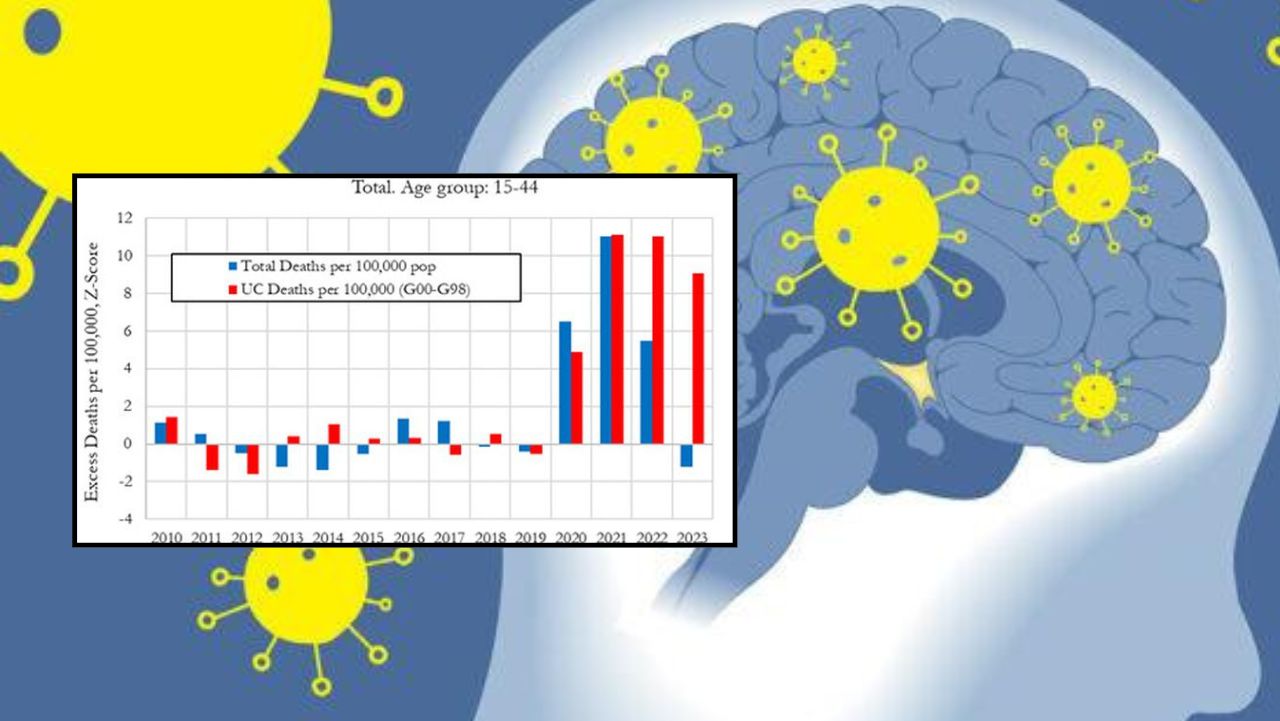Health
Study Finds Alarming Surge in Deaths from Neurological Disease Among Young Adults
“The results show a clear break from the prior historical trend in death rates from neurological diseases…”

This article originally appeared on ZeroHedge and was republished with permission.
Guest post by Tyler Durden
A recent preprint study which relies on extensive data from the Centers for Disease Control and Prevention (CDC) paints a concerning picture of the neurological health landscape in the United States.
The study, which focuses on those aged 15-44, reveals a disturbing increase in deaths from neurological diseases both as the primary cause and among multiple contributing factors.
This uptick in mortality rates, which is particularly significant among younger adults, could have profound implications for the nation’s public health policies, especially in the wake of the COVID-19 pandemic.
Perhaps most concerning, the study found an increase in neurological complications following COVID-19 vaccinations, including conditions such as Guillain-Barré syndrome and acute disseminated encephalomyelitis.
According to Phinance principal Ed Dowd, “The results show a clear break from the prior historical trend in death rates from neurological diseases.”
The Study: Methodology and Key Findings
Researchers Carlos Alegria and Yuri Nunes of Phinance Technologies conducted a deep dive looking at neurological disease-related mortality across various age groups from 2000 to 2023.
Their study distinguishes between deaths where neurological conditions were the underlying cause (UC) and instances where these diseases were listed among multiple causes (MC) on death certificates, and compares death rates against a baseline to identify excess deaths.
Key findings from the study include:
- A notable rise in excess mortality from neurological diseases reported as the underlying cause of death among individuals aged 15 to 44, with increases of 4.4% in 2020, 10.0% in 2021, 9.9% in 2022, and 8.1% in 2023.
- Excess deaths from neurological conditions as part of multiple causes tracked overall mortality rises and were significant even after removing deaths where COVID-19 was also reported.

As Phinance notes, “The strength of the statistical significance of the excess deaths from neurological diseases was very high, being considered extreme events, indicating a clear change from the prior 2010-2019 trend.”
The intersection of the COVID-19 pandemic with the rise in neurological disease deaths adds layers of complexity to the analysis – including the notion that various medical interventions and societal disruptions might have exacerbated underlying neurological vulnerabilities:
- Notably, the study points to an increased risk of developing severe neurological conditions following COVID-19 vaccinations, with specific vaccines linked to higher risks of serious ailments such as the aforementioned Guillain-Barré syndrome.
- Some cases of long covid have been associated with long-term neurological complications.
Perhaps most alarming is the impact on younger individuals. Those aged 15-44, typically considered in the prime of life, exhibited a stark increase in neurological disease-related deaths. This raises serious questions about potential environmental, biological, or social factors that are disproportionately affecting younger populations.
The authors conclude:
How can we explain the excess UC deaths from neurological diseases in 2020, 2021, 2022 and 2023? In 2020, this could be explained by deaths from health effects related to the pandemic management measures such lockdowns and lack of medical care, or other related factors such as stress, less exercise, worse food habits, or from under-diagnosed COVID-19 itself, or related side effects. The acceleration in excess death rates from neurological diseases in 2021, 2022 and 2023 is more difficult to explain due to COVID-19 on its own. Given the case studies of neurological adverse events following COVID-19 vaccination cited in the literature, one possible factor could be adverse effects of the COVID-19 vaccines. Furthermore, one must also account for the possibility of continuous COVID-19 infections or Long COVID…
Implications for Public Health
The implications of these findings extend far beyond the immediate health of the young adult population – and pose serious questions about the readiness of the U.S. healthcare system to handle a potential influx of neurological health needs and the potential need for sweeping changes in public health policy:
- There is a clear call for focused research to unravel the factors driving this surge in neurological deaths.
- Public health strategies may need to pivot towards enhancing neurological health services and preventive care, particularly for younger populations.
- Understanding the full impact of COVID-19 on long-term health outcomes will be crucial in shaping future healthcare initiatives.
The study raises concerning and considerations – between the social impact of waves of potential neurological disease and the woefully underprepared healthcare system, health priorities in the coming decades will need to be analyzed and addressed.
Copyright 2024 ZeroHedge
-

 News1 day ago
News1 day agoThe Great Reset Has BACKFIRED
-

 Health1 day ago
Health1 day agoAnother COVID “Conspiracy Theory” Becomes Reality
-

 News14 hours ago
News14 hours agoChildren Among Mass Casualties After US-Supplied Missile Hits Crowded Beach in Crimea
-

 Featured1 day ago
Featured1 day agoMedia Blackout: 10 News Stories They Chose Not to Tell You – Episode 28
















